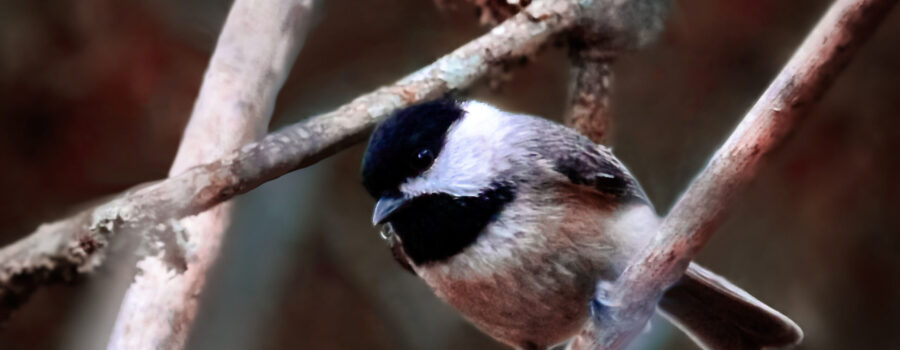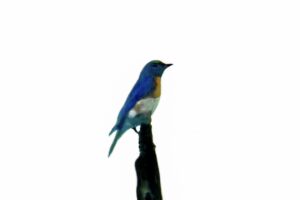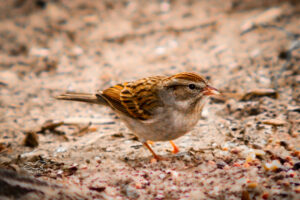Perfect, Protected Places to Eat are Important For Little Birds

Even though I do my best to put food in an accessible but safe place when I feed the wild birds, they never completely let their guard down (nor would I want them to). That’s part of the reason I always cringe a little when I see pictures of people feeding them by hand. One important aspect of staying alive for wildlife is to retain a sense of caution at all times. As you may know from reading these blogs, I like to look for and study behavior in animals. As with their feeding habits, different species have varying ways of keeping themselves safe. Some larger birds like crows and turkeys have one or more lookouts that stay alert while the rest of a group eats. The little chipping sparrows and the tufted titmice tend to come and go in flocks, which decreases the chances of any one individual getting eaten by a predator. The little oven bird and the Carolina wrens like to hide in the underbrush or under other objects that provide protection. Many species, like the Carolina chickadee (Poecile carolinensis) in this photo do more than one of these behaviors. They often arrive and leave in small flocks, sometimes mixed with other birds, especially the titmice. They are also not at all shy about about using the bushes, especially the vines that surround the feeding station, as perches while they eat or watch the action. This little bird discovered a nicely covered spot between several branches, that was also surrounded by brush, and he kept returning with every morsel he took. I could completely understand why this was such a prime spot.
What do you think?





Recent Comments